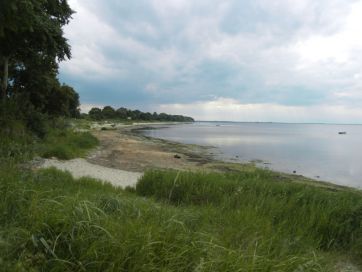The Devil as a Girl: Difference between revisions
Created page with "{{Sidebar|Usedom Coast.JPG|Coast at Usedom Island.|The Devil as a Girl|10|Mecklenburg-Vorpommern|{{Coordinates|53.933333, 14.083333}}}} (Oral tale retold by a captain’s wife from Swinemünde.) On the island of Usedom there once was a noble who led a sinful and wicked life. He went after young girls in such a way that only a few of them escaped his depredations. At one time, he drove along the ocean’s coast and saw a coach approaching from a distance. In it, he saw..." |
(No difference)
|
Revision as of 12:55, 11 October 2025

|
| Geographic Coordinates: 53° 56' 0.00" N, 14° 5' 0.00" E |
(Oral tale retold by a captain’s wife from Swinemünde.)
On the island of Usedom there once was a noble who led a sinful and wicked life. He went after young girls in such a way that only a few of them escaped his depredations. At one time, he drove along the ocean’s coast and saw a coach approaching from a distance. In it, he saw a beautiful girl, and immediately he wanted to get to her. But his coachman called after him: “My lord, lock at her feet, look at her feet!” Then he saw that the girl had a horse’s foot. Immediately he recoiled back, but in the same moment the girl also jumped out of the coach and hurried after him. He now threw himself into his own wagon and hurried home in wild haste, but the girl followed after him, with her unbound hair trailing behind her. Finally he reached his house, raced inside, barred the door behind himself, and then fled upwards to the roof so that he could see whether his dreadful pursuer was still behind him. Then he saw how she reached up at the wall like a cat and climbed higher and higher, and finally she had reached the top. Then, in frantic fear, he ripped his flute from the wall and blew the melody:
“My Lord, I have done wrong,
Yes, great is the weight of my sins,
I did not walk on the path,
Which you had shown to me.”
And with the last note the girl was likewise gone. The nobleman repented and started a new life.
Source: Kuhn - Norddeutsche Sagen, Märchen und Gebräuche, p. 19f